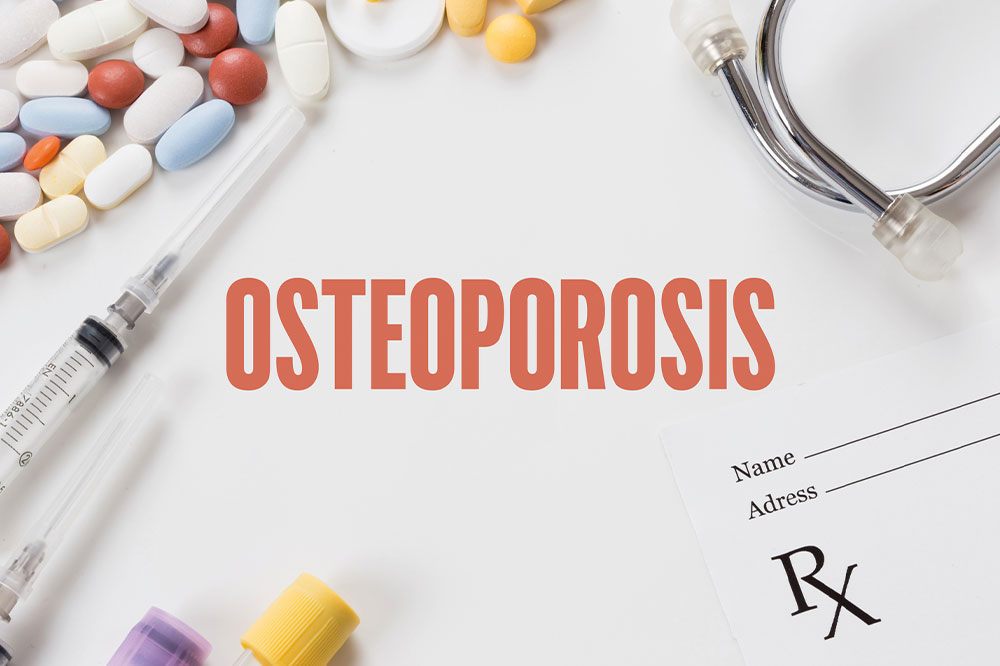Natural Factors and Health Conditions that Increase the Risk of Osteoporosis

Osteoporosis leads to the loss of bone mass and bone mineral density. It causes the bones to become weak and brittle from the inside, making them more porous. Once individuals reach a certain age, the natural process of bone regeneration slows down, resulting in loss of bone loss, especially in the event of physical injury. With osteoporosis, the bones become more prone to fracture even during routine activities like walking, bathing, and standing.
Risk factors associated with osteoporosis
Various factors increase a person’s chances of developing osteoporosis. Some of these aspects can be modified, while others are hard to avoid. For example, the body absorbs old bone tissues and produces new ones so that it can maintain the strength and density of the bones and, thereby, the structural integrity. As a person grows older, the bone breaks faster than it rebuilds itself. If this breakdown occurs excessively, bone loss progresses to osteoporosis. This disease can affect both men and women but is more likely to affect women after menopause. This happens due to a sudden decrease in estrogen.
Here are some unavoidable factors that increase the risk of osteoporosis-
Age
The risk of developing osteoporosis increases after the mid-30s. This happens mostly with women after menopause.
Genetic factors
If you have a close family member who was diagnosed with osteoporosis, then there are more chances that you will also have to deal with the same issue.
Ethnicity
It is said that individuals of Caucasian and and Asian descent have a higher risk as compared to others. This is due to the lack of vitamin D in their body.
Reduced sex hormones
Lower estrogen levels lead to bone loss. So, reduced sex hormones are also a reason for the onset of this disease.
History of fractures
If you have a history of suffering too many fractures, it is more likely that you will be diagnosed with osteoporosis.
Health conditions that can lead to a risk of osteoporosis
Additionally, several health conditions can increase the risk of osteoporosis. You are more prone to getting the condition if you are having any of the following diseases:
Diabetes
It is observed that people with type 1 diabetes tend to have lower bone density because this condition affects the metabolism of calcium, phosphorous, and other minerals. The excess sugar gets excreted through urine along with these minerals. Since high blood sugar shuts down the formation of the bone, people with this disease are more likely to experience bone loss.
Hyperthyroidism
Hyperthyroidism is a disease that occurs when the thyroid gland becomes overactive and produces too much thyroid hormone. This hormone increases the number of bone-remodeling cycles you go through. Once you reach your 30s, this cycle becomes inefficient. So, the more cycles you go through, the more bone loss you are likely to experience. High levels of thyroid hormone can also result from the treatments taken to stimulate an underactive thyroid gland.
Rheumatoid arthritis
It is an autoimmune condition wherein the immune system of a person attacks its healthy cells. This causes further inflammation. If you have any kind of chronic inflammatory disease, it can put you at a greater risk of osteoporosis, and it can also increase the rate of bone turnover. People suffering from lupus and rheumatoid arthritis need to undergo long-term treatment with steroids, and this slows the activity of bone-building cells. This problem is common in women who are aged between 15 to 45. If you attract anything that impedes the growth of bone during this phase, it will increase your chances of developing osteoporosis.
Celiac disease
If celiac disease is left untreated, it can damage the lining of the digestive system. It can thus interfere with the digestion of nutrients, which includes calcium and Vitamin D which are very important for bone health. So, when you are suffering from this disease, your body will not have enough nutrients and this can result in low bone density.
Asthma
It is not asthma that increases your risk of developing osteoporosis, but the remedies used to treat the condition that can cause bone loss. The inhalers used to dilate the bronchi may contribute to osteoporosis.
Other causes of bone loss include being confined to bed due to a prolonged illness, having some prior health conditions that cause increased inflammation in the body, taking certain treatments for seizures and breast cancer.
Ways to help prevent osteoporosis
You may be able to reduce the risk of osteoporosis by making a few alterations to your lifestyle, such as:
Increasing your intake of Calcium and Vitamin D.
Exercising well and regularly.
Keeping your bones healthy by eating the right kinds of food.
Make some lifestyle changes, like maintaining a healthy sleep schedule.
Getting sunlight for some time every day so that enough vitamin D gets synthesized in the body.
In conclusion
Most people don’t realize that they are suffering from osteoporosis until they experience a fracture. This is also the reason why it is called a silent disease. While osteoporosis mainly affects middle-aged women, if you have lower bone density, you should look into adequate remedies immediately. Preventive care will help you avoid developing the condition. Additionally, as age is one of the biggest factors for developing this disease, if you get the right treatment at the right time, it can bring a halt to bone loss and also reduce the risk of fractures. Note that osteoporosis might be prevented by making a few lifestyle changes. Try to get enough calcium from the food or take a supplement if there is a deficiency. Also, opt for regular bone density tests to keep osteoporosis at bay.







